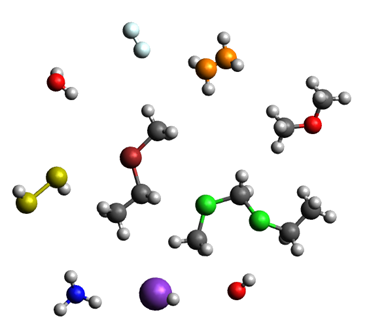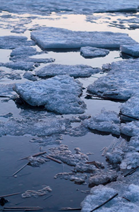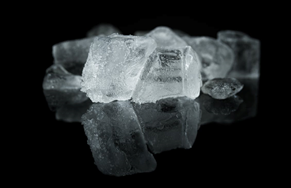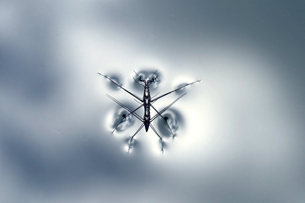
Atoms are the building blocks of the universe… Everything we see or taste or smell or touch is made up of atoms. We are made out of atoms!!
This means to fully understand matter and predict its behaviour and properties in different environments, we need to look at an atomic level.
Remember even though we can’t see them, molecules are always moving. Molecules bend, stretch, spin, and move through space. Atoms that are bonded together bounce back and forth like two balls attached by a spring. Here are some videos showing a water molecule (known chemically as H2O because it is made up of two hydrogen atoms bonded to one oxygen atom) rotating, bending, and stretching about its bonds.
This movement plays a big role in how a molecule interacts with its environment and this affects material properties.
Let’s think about some questions that can only be answered by looking at an atomic level.
Can you answer these questions about H2O by explaining the behaviour and interactions between atoms and molecules?

Question 1: Why does ice float?
The solid form of almost all matter is denser than its liquid form – but not water. Why does H2O in its solid form (ice) expand to take up more space than liquid water?
Sketch out an answer and try to explain it out loud.
Answer 1: Watch the first video below to hear the explanation at an atomic level

Question 2: How many different types of ice are there?
Different types of ice can be categorised by the arrangement of H2O molecules. How many types do you think there are and can you predict their molecular arrangement(s)?
Try drawing the arrangements. Also think about what conditions might cause different types of ice to form.
Answer 2: Listen to the second video for the answers.
And for fun, watch the next a video showing the molecular movement as crystalline ice melts!
Question 3: Why can water striders (and paper clips!) float on top of water, even though they are denser than the liquid?

Water has an amazing ability to hold things on its surface when you would expect them to sink. There is another video below showing great footage of this.
Describe the role of intermolecular interactions in explaining the surface tension of water.
Answer 3: There is another video with diagrams helping unpack the atomic insights into water surface tension.


